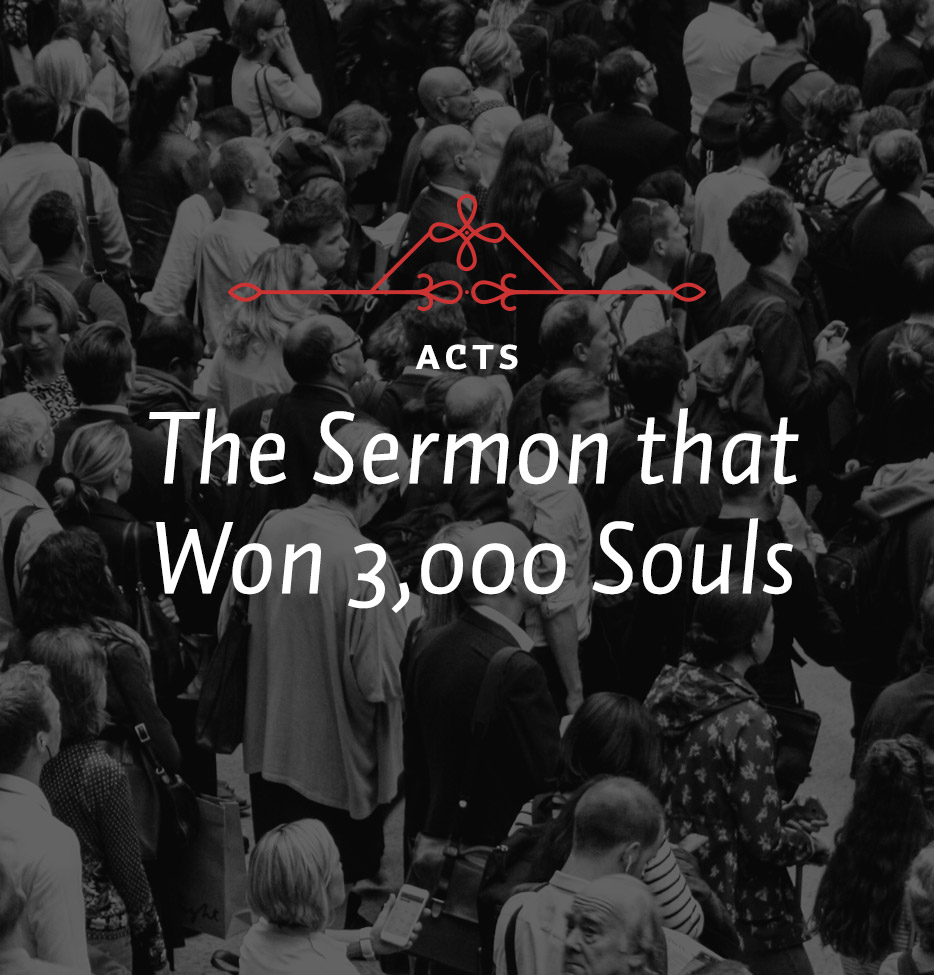From time to time I read accounts of revivals in which the Spirit of God worked in such strong ways that many hundreds of people responded to the Gospel. Yet in all those accounts I have not read of any in which a sermon was so blessed by the Holy Spirit that 3,000 people who before it were lost in sin and blinded in their ignorance, far from God and far from faith in Jesus Christ, turned from sin, responded to the Gospel call and entered the company of God’s people within the church. Yet that is what happened at Pentecost as God blessed the first great sermon of the church age.
Jesus had told His disciples that they were going to receive power and that after they had received it they were going to be His witnesses. They were going to begin at Jerusalem, and then they were going to go out from there into all the known world. This is what happened as the Holy Spirit came upon the disciples and Peter preached in Jerusalem.
When we were looking at the account of Pentecost in last week’s study, we saw that the emphasis is upon the apostles’ speaking. Sometimes we get off base on that. We look at what happened and get very excited about the miracle of speaking in tongues—each one heard the preaching in his or her own language—and we want to duplicate that today. We want another miracle. Well, speaking in tongues at Pentecost certainly was a great miracle, and an exciting one, and one Peter used in a powerful way as an introduction to the sermon he preached about Jesus. But it was not the essence of Pentecost. It was an important miracle. But the most important thing is that those who were filled by the Holy Spirit began to be Christ’s witnesses, as He had told them they would be.
Peter’s Pentecost sermon is a model sermon. We would expect it to be since it was: 1) the first sermon of the Christian era; 2) preached by the most prominent of the apostles; and 3) resulted in great blessing. It is a sermon every preacher should study. Yet, more than that, it is a sermon all Christians should study because, although in a formal sense most Christians do not preach sermons, all nevertheless have many opportunities—they must have them—to speak about Jesus Christ. So the principles that govern the formation of a great sermon must govern the informal witness of the people of God in other circumstances.
I want to highlight the chief characteristics of this sermon.
First, this is a great biblical sermon, which means that it is centered on the Bible. Peter did not have the New Testament before him when he preached at Pentecost, but he had the Old Testament. And not only did he have it, he knew it. I suggested in an earlier study that Peter had spent the days immediately before Pentecost studying the important Old Testament texts bearing on Jesus’ ministry. And probably the other Christians who were gathered together on Pentecost had done so, too.
The Lord had started them on this track. He had explained the nature of His work by referring to these texts, saying that the disciples were foolish and slow of heart to believe, because they did not see that the things that had happened to Him had been fulfillments of what had been prophesied. We know that when Jesus met with the Emmaus disciples, he began with “Moses and all the prophets” and explained to them in “all the Scriptures,” that is, in all three sections of the Old Testament, the things that concerned Himself.
During these days of waiting, Peter had undoubtedly searched the Scriptures, as Jesus had taught him to do. Now suddenly Pentecost came. And Peter, never a person to be shy or idle, seized the opportunity.
In our day a preacher will usually take one text and develop three (or at most four) points from it. So you have “three-point” or “four-point” sermons. This is because people’s attention span is rather short today. In Spurgeon’s day, one hundred or more years ago, four-point sermons were the norm. People used to talk about a great “four-pointer.” If we go back to the time of the Puritans, we are astounded to find that they could go on to eight, nine, ten, twelve, or sometimes more points. And they were not just little items either. They were developed at length and over a long period of time. People knew how to listen then. They could think. So there was a time when there were sermons with many, many points.
It is interesting, however, that when we turn to Peter’s sermon we find that it is not a case of his having many points as of his having many texts. He does not just take one text and expound it, as most of today’s preachers have been taught to do. He has three texts, and he expounds each of them.






